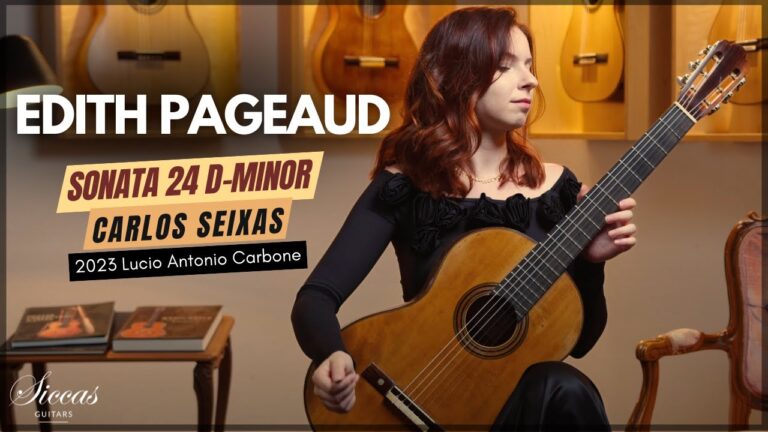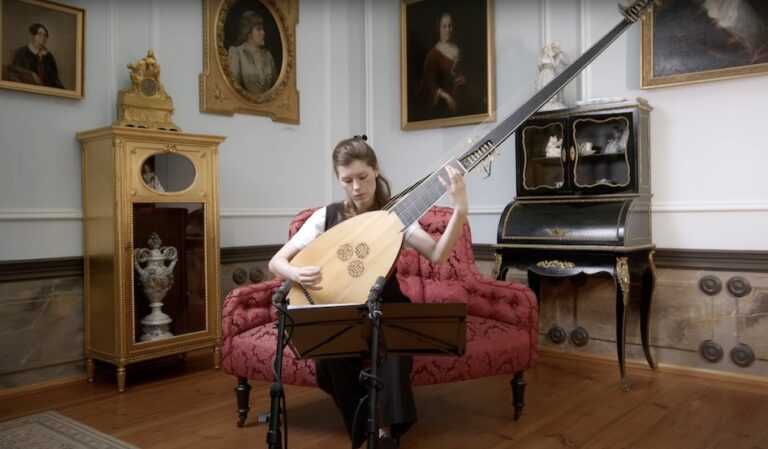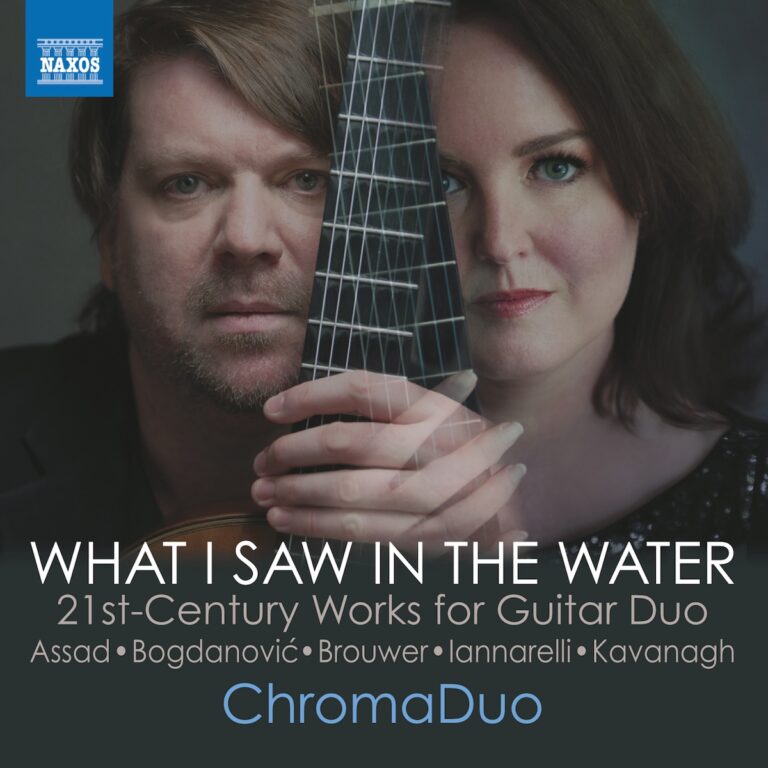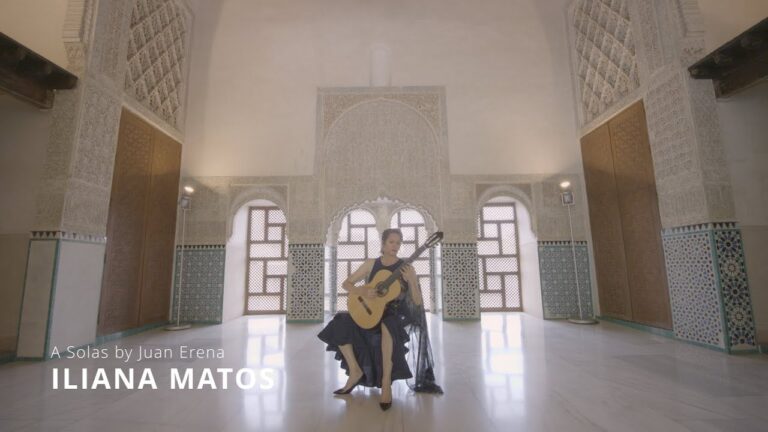Evangelina Mascardi (Baroque guitar) and Lincoln Almada (harp and percussion) perform works by Santiago de Murcia (1682-1739) at the Auditorium Pittaluga del Conservatorio di Alessandria, Italy. This comes via Edoardo Lambertenghi’s excellent YouTube channel. Beautiful performance as usual from Evangelina Mascardi and a joy to have the percussion and harp included.
- Repertoire
- 0:00 Grabe
- 2:16 Allegro
- 4:21 Zarambeques
- 6:36 Marizapalos
- 10:06 Fandango
- 14:49 Canario





Thank you for getting back to me.
is it easy to learn coming from the Classical world?
What, the Baroque guitar? Well, the tuning is different which would be a surprise if you read notation. But you could read the Baroque tablature which would make some aspects easier. The technique is quite different but it depends on your goals as you can play it with modern technique. I don’t love the sound of my nails on Baroque guitar so I’d have to either cut them or shape them differently which is the big one for me.
Hello Bradford, really liked that first piece, and was watching her right hand. Seems like a different technique than a classical guitar. It looked like it was a tighter hand positioning, and the thumb use was different looking too. Is that the case for Baroque guitar?
Thank you,
Anthony Chaiken
Yes, the technique is a bit different as is the instrument. She also plays lute as well which goes along with it.